Email best practices
Email marketing statistics: From overall success to personalization
Stats on email marketing help you understand the big picture and set goals for your own strategies and tactics. Find out what more than 3,000 senders say about how they’re using the channel. Plus, take a deep dive into email personalization statistics with these results from Inbox Insights 2023.
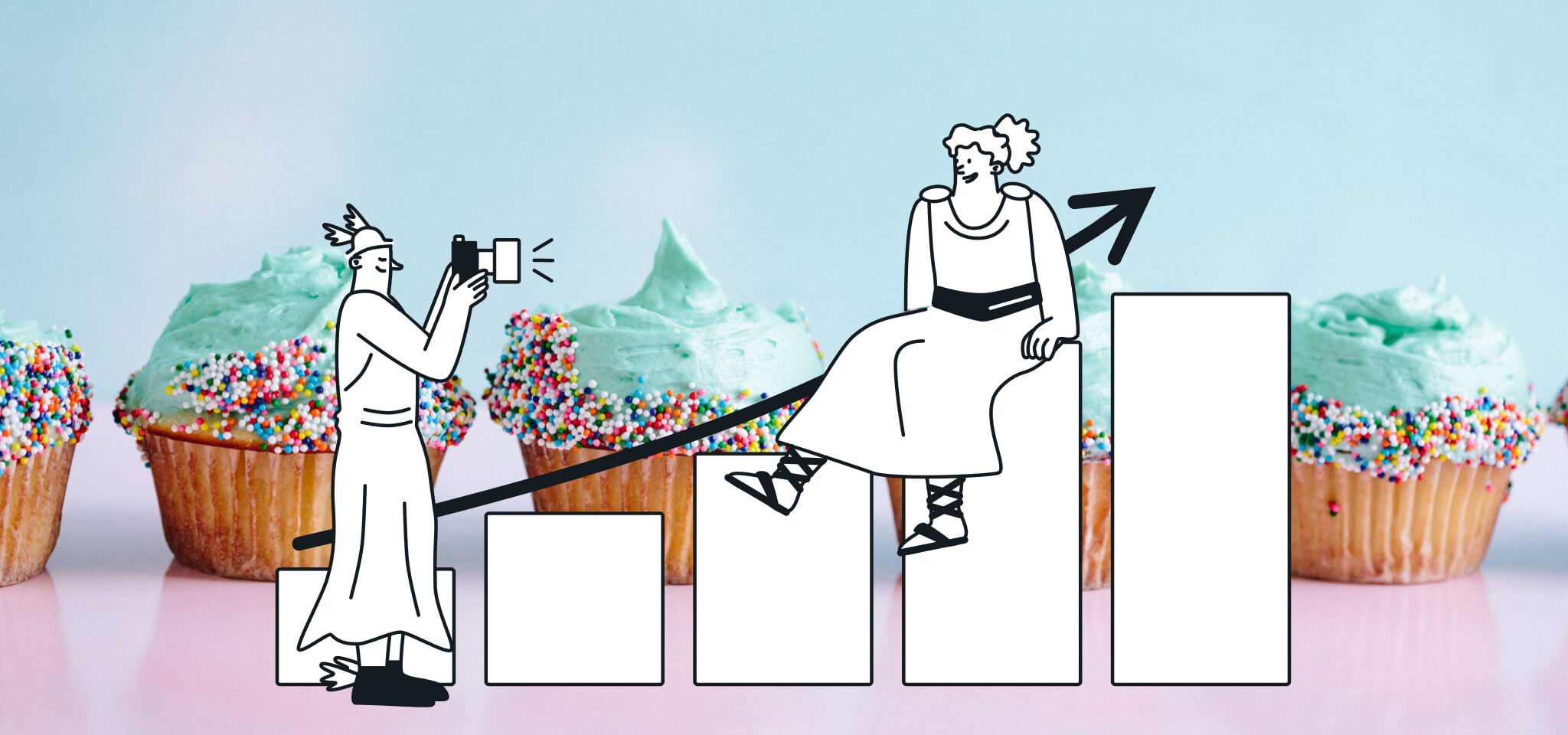
PUBLISHED ON
Email marketing statistics help you measure and compare your program’s success and strategy to other senders. While it’s totally true that every industry, brand, and contact list is unique, looking at the big picture helps you find areas of improvement.
Inbox Insights 2023 questioned thousands of senders about the state of email. The survey results reveal some eye-opening email marketing statistics to help you come up with new ideas for standing out from the rest of the messages in those crowded inboxes.
This article includes a special focus email personalization as well as the tactics and data brands are using to customize email campaigns for customers and subscribers.
Table of contents
Stats on email marketing objectives
Email marketing measurement statistics
Stats on what makes email successful
Email marketing team statistics
Stats on email marketing challenges
Business size comparison
International comparison
Industry comparison
Inbox Insights: Key email marketing statistics
Let’s start with some of the major findings from the survey. These statistics reflect global responses from businesses of all sizes and various industries. You can find out more about these results in the full report or in our article covering key takeaways from Inbox Insights 2023.
A good sign from the survey is that most senders we questioned believe their email programs are successful. Out of 3,000+ respondents, more than 16% called email Very successful over the last 12 monthswhile another 43.5% called the channel Somewhat successful. Less than a combined 11% called email unsuccessful.

Stats on email marketing objectives
So, what is it that email helps companies achieve? We asked participants to choose up to three of the most important email marketing objectives, and these were the options that came out on top:
Content distribution (49.5%)
Transactional communication (35.3%)
Promotions and selling (30.5%)
The trio of content distributions through newsletters, transactional emails, and promotions are definitely familiar email marketing objectives. Lower on the list is where you’ll find objectives like Communication with support (10.3%) and Reengagement (7.0%). That’s not to say these goals should be less important to your program. Popular and important aren’t the same thing.
Email marketing measurement statistics
What metrics do marketers use to measure email performance and determine success? In our survey, some standard email key performance indicators (KPIs) topped the list of the most important metrics:
Open rate (42.7%)
Click rate (42.1%)
Conversion rate (26%)
In comparison to other regions, senders in the U.S. were much less likely to select open rates as an important metric. U.S. senders were, however, more likely to choose conversions, revenue, and ROI as important metrics for measuring email’s success.
Overall, senders were less likely to view measuring email’s impact on Customer retention (4.2%) and Product adoption (3.8%) as important. But again, those KPIs could be extremely important to your marketing team, especially if you’re going deeper into measuring the effect of email.
Stats on what makes email successful
If an email marketing program is successful, what are the most important factors that contribute to it? When asked to choose up to three, these were the factors senders around the world identified:
Design and copy (34.4%)
Improving deliverability (34.4%)
Cohesive strategy (32.1%)
The statistics are very close here, with around one-third of senders selecting each of the top three options. Email production, deliverability, and overall strategy are three very different areas. Designing and writing effective campaigns is certainly important. But you need to apply a strategy to that design and copy, which means understanding your audience. And, if your emails fail to get delivered to the inbox, all your strategy, design, and copywriting, are wasted.
Email marketing team statistics
Here are a few key stats on how email marketing teams work. You can dig deeper into these Inbox Insights results in an article from Sinch Email on Acid exploring the state of email teams.
Most common email team size: Two to five people (42.8%)
Typical email campaign production time: Less than one week (47.2%)
Email design system usage: Teams that always use a design system (36.2%)
Inside the complete Inbox Insights 2023 report, we break down these statistics even further. That includes how team size and levels of success correlate to production time and design system use.
Stats on email marketing challenges
When asked to identify their three biggest email design and development challenges, a few recognizable roadblocks topped the list:
Responsive emails (36.1%)
Inconsistent rendering (35.1%)
Dark mode (24.5%)
The complexities of designing and coding for different inboxes have many teams struggling to create emails that work on mobile. In the meantime, the constant battle of dealing with varied support for HTML and CSS in different email clients continues. Finally, the rise in popularity of dark user interfaces has created new challenges for email developers. Find out more when you check out our dark mode email challenges infographic.
Beyond the challenges of producing email campaigns, we also collected some statistics on what holds brands back from achieving more with the channel. These are the top three constraints to email marketing success chosen by our survey respondents:
Standing out in the inbox (37.3%)
Inbox placement issues (32.7%)
Lack of time/focus (32.7%)

It should surprise no one that Standing out in the inbox is considered a significant challenge for email marketers. One way many senders try to break through the clutter is with personalization. But as you’ll see, there are many ways to implement an email personalization strategy and captivate your customers.
Email personalization as a top tactic
Take a quick scroll through your inbox and you’ll almost certainly spot your name in several subject lines. Open a few of those emails and you may find campaigns that seem to be created just for you. There are products you might want to buy, articles, movies, or music that may be of interest to you, and unique stats generated from the apps and technology you’re using.
Email marketing is ripe with opportunities for personalization. But every brand approaches the strategy behind personalized emails a bit differently.
Among the many topics covered in the full Inbox Insights report, one question concerned the advanced tactics respondents expect to pursue as part of their 2023 email strategy. When asked to pick the top three tactics, Personalization was the most popular option. More than 41% of senders plan to make email personalization part of their strategy this year.
However, we should point out that this result does not mean the other 59% of senders aren’t using personalization at all. It simply suggests that it’s not one of their top three advanced tactics over the next 12 months. For some of those senders, personalized emails may be business as usual. Inbox Insights 2023 found only around 15% of senders aren’t using any personalization.

The other two tactics in the top three are closely related to email personalization. Nearly 35% of senders selected Segmentation, which you could view as a way of personalizing communications for certain groups of subscribers instead of individuals.
31% of senders in our survey will use Send time optimization in 2023. This feature automatically sends messages during the time of day when specific subscribers are most likely to be checking their email. That’s yet another way to personalize the inbox experience.
Who is personalizing emails (and who isn’t)?
More than 85% of our survey respondents are already using email personalization in some form. So, it’s more interesting to explore the statistics around who is not using personalization. Let’s take a closer look at that 15% of email senders.
Business size comparison
When we break things down by business size, it’s clear that smaller businesses have the highest percentage of senders who have yet to adopt an email personalization strategy. Nearly a quarter (24.8%) of companies with fewer than 10 employees are not personalizing email campaigns at all.
That’s more than double the percentage of all other business sizes. Between 8% and 11% of medium-sized and large companies are not using email personalization. Interestingly, the largest companies in our survey (500+ employees) had the next highest result.
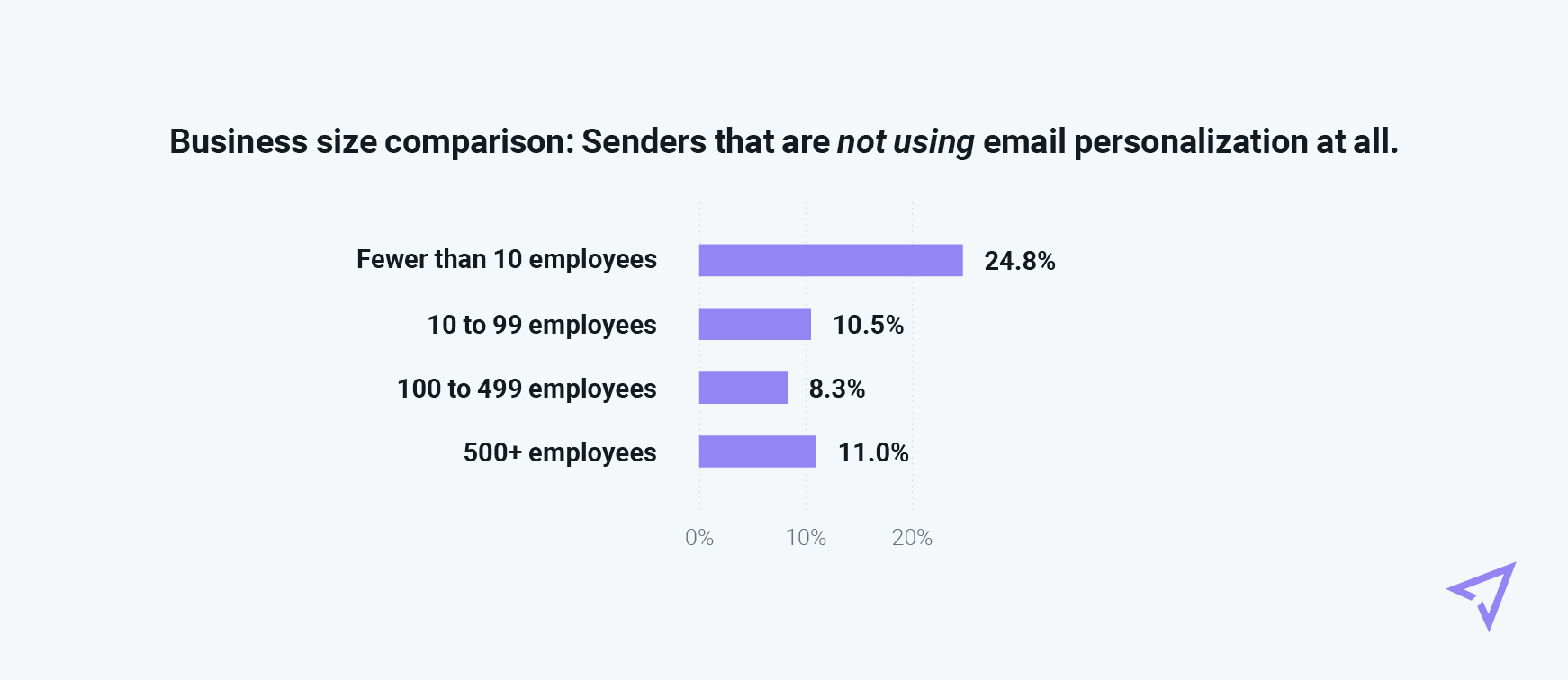
International comparison
Inbox Insights surveyed senders from all over the world. The full report also takes a closer look at several international regions beyond the U.S. market: France, Germany, Spain, and the United Kingdom. Results show that more than 37% of senders from France are not using any email personalization.
It’s unclear why French senders are an outlier in this area. The results may be related to the fact that, of the 560+ French respondents in this survey, 58% were from small businesses with less than 10 employees. Those businesses are less likely to personalize emails. The lack of email personalization in France could also be connected to a general distrust the French have for large companies as well as concerns about how their personal data is used.
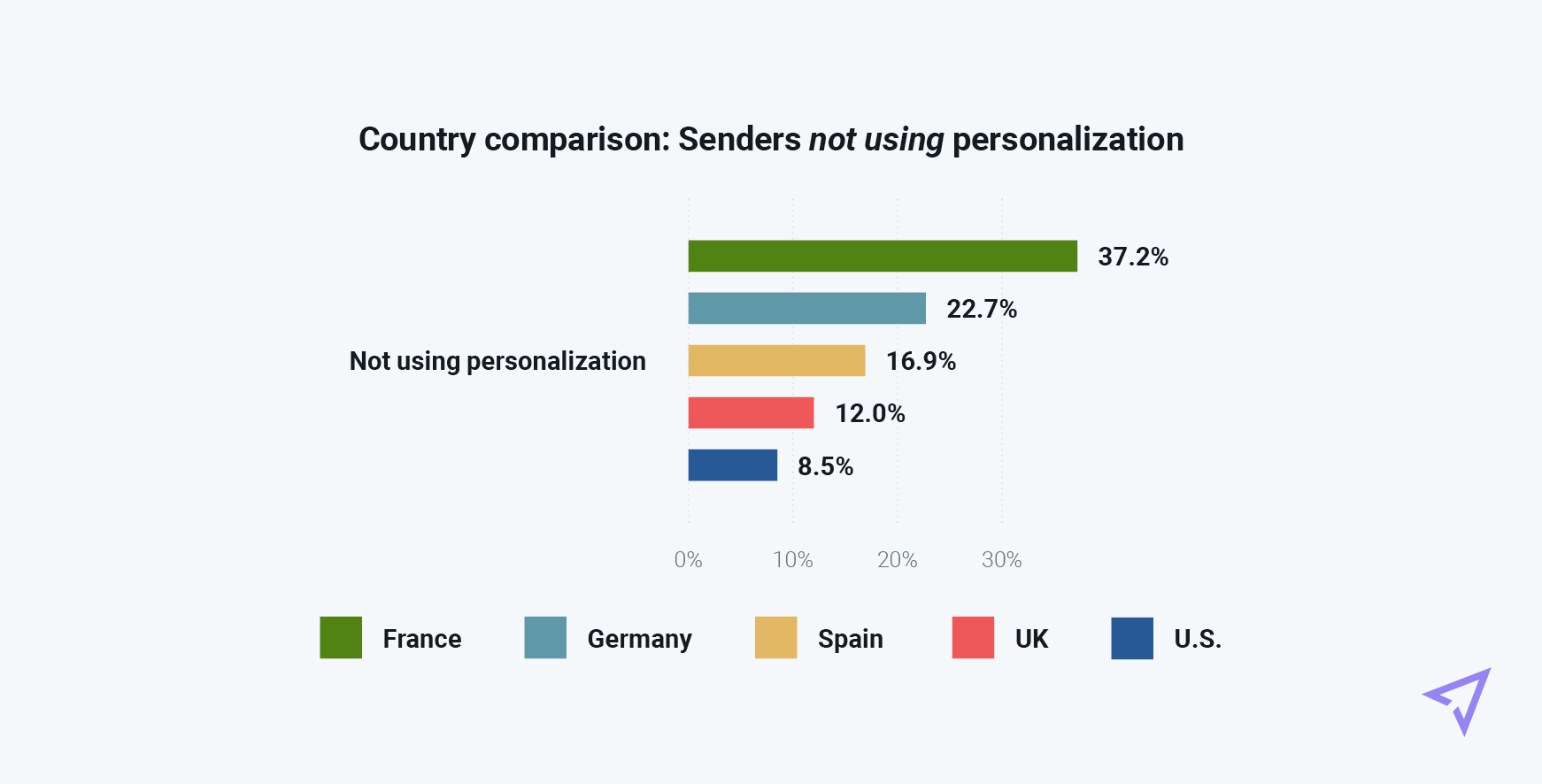
A 2018 study from McKinsey found French consumers were receiving almost as many personalized messages as U.S. consumers. However, along with Germans, people in France were among the least likely to view personalized messages favorably. And only 19% of French respondents in Mckinsey’s research said those messages were relevant to them. So, it’s possible that French senders have decided email personalization isn’t always worth the effort.
Industry comparison
Personalized email communication lends itself to some business types more than others. When we filter Inbox Insights survey results based on industry, the stats show that some are much more likely to pursue personalization.
Our survey included a list of 25 different industry options. More than half of respondents from these six industries say they plan to pursue personalization as an advanced email marketing tactic in 2023.
Advertising (62.8%)
Non-profit (56.5%)
Travel/Hospitality (56.0%)
Software as a Service (55.8%)
Retail/ecommerce (54.6%)
Media/Publishing (53.3%)
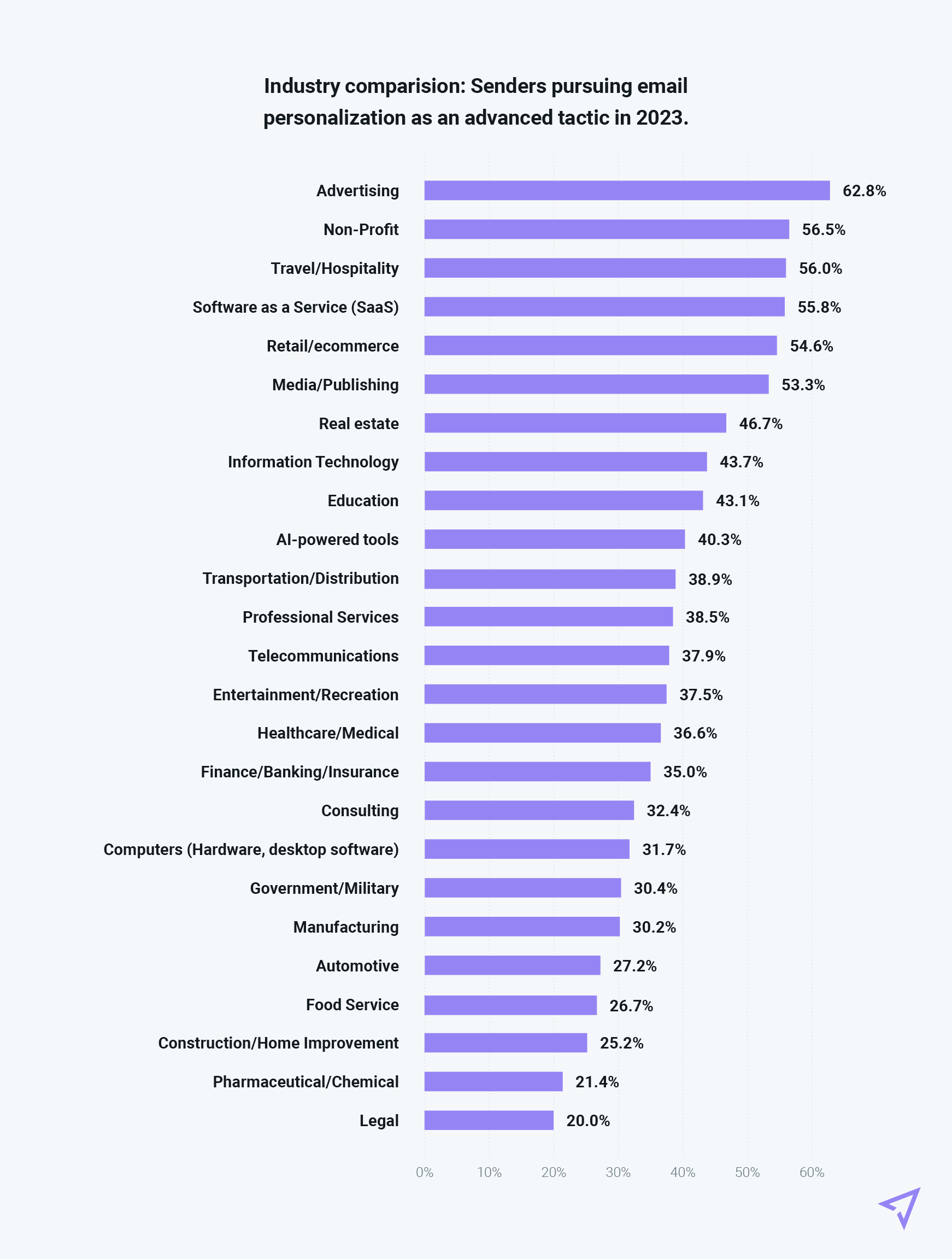
Since advertisers are usually the first to adopt advanced personalization tactics, it makes sense that the Advertising industry tops the list. Retail and ecommerce brands have plenty of consumer data to help them personalize email campaigns. And personalized inbox experiences are an obvious choice for senders in the Travel/Hospitality and Media/Publishing industries as well.
More than 31% of senders from non-profits said they are not using email personalization. Yet, the group takes the number two spot in the chart above. This suggests that non-profits are seeing value in personalized communication, and they’re doing more of it in 2023. What better way to connect with donors, supporters, and volunteers than by making things more personal?
If you’re just starting to explore personlization, it’s wise to consider why it’s important. Consultant Jordie van Rijn of EmailMonday.com explains the value in creating a high-quality, engaging email experience first... before enhancing it with basic personalization:
“Does ‘Hi firstname’
feel
more personal? There is certainly no Wow-effect anymore. People know how it works. But we all know that one email that sucks, and another one that is great. So, it is contextual. I realized that you can do a lot to
make your emails more personal, without personalization
. If it is already personal and you use the name, it adds to the feel. While a cold ‘fact of the matter’ low effort email, won’t add to that experience at all.”
Jordie van Rijn, Email Marketing Consultant

Jordie van Rijn
Email personalization strategy and tactics
There are a lot of ways to implement email personalization. However, as Jordie pointed out, not all those methods achieve the effect of making a campaign feel personal.
Because personalized marketing of all types has become so common, basic email personalization may not be enough to convince contacts to notice and engage with your emails. And getting noticed is a major challenge for many email marketers. As you’ll recall Inbox Insights found that Standing out in the inbox is the most-common constraint to email marketing success.
The best way to stand out is to do something different, which suggests basic name personalization won’t do the trick. Of course, Names in email copy (46.5%) and Names in subject lines (36.5%) were chosen most often when survey respondents selected the ways they personalize emails.

Jordie van Rijn says the real issue isn’t whether you personalize campaigns or not. The focus should be on how you make your emails more relevant to individuals. Many of the marketers he trains tell him they appreciate how the email channel creates a one-to-one experience. Jordie says that can happen in three ways:
Choose the right products and content to match with the recipient.
Show it in a way that grabs attention and aligns with their needs/wants.
Learn more and more about what your subscribers like.
“So ‘Do you do personalization?’ isn’t a yes or no question in my opinion. It is in how far you are able to Choose, Show and Learn to increase the value of your emails. And personalization is right there in your marketing toolbox, waiting to increase the value of your emails.”
Jordie van Rijn, Email Marketing Consultant
In the full Inbox Insights report, we explore the correlation between different types of email personalization and program success over the last year. Long story short, email marketers who deliver personalized product and content recommendations are more likely to report having successful email programs.
Data used for email personalization
To begin personalizing emails, you need subscriber data. A first name and an email address are certainly two pieces of data you can use to get started. However, it’s likely that you have other types of zero-party data you can use to customize email campaigns.
Given the results in the last section, it should come as no surprise that Subscriber name (53.1%) is the type of data being used most often in email personalization.
Purchase history (30.6%) is another type of zero-party data that can inform your email strategy. It may indicate other products a subscriber is interested in buying, or it could tell you when they are ready to reorder.
Online purchases and data collected from website browsing may even tell you something about your subscribers’ lives. If they’re buying lots of baby clothes, they may be expecting a new addition to the family. If they’re reading articles on your site about mortgages, they’re probably getting ready to move or buy their first home.
Rounding out the top three, 28% of email senders in our survey are using subscriber birthdays and anniversaries to personalize emails. When we say “anniversary” that often refers to marking the years a subscriber has been a paying customer. You can make a personal connection when you celebrate milestones such as the date they signed up or placed their first order from you.

It’s important to note that email marketers must be very careful with how they’re using subscriber data, especially if they need to comply with GDPR (and most of us do). To get some expert advice, check out what Sinch Mailjet’s Data Privacy Officer has to say in our article on personalization and privacy.
GDPR compliance may be one reason why our personalization statistic show email senders in Europe are less likely to go beyond using a subscriber’s name. While more than 80% of respondents from France, Germany, and Spain are using names, the number drops to 43% of U.S. senders.
However, email marketers in the U.S. are more likely to be using information such as Website browsing (26.3%), Content consumption (20.8%), and Application usage (22.5%) when compared to their counterparts in the European Union.
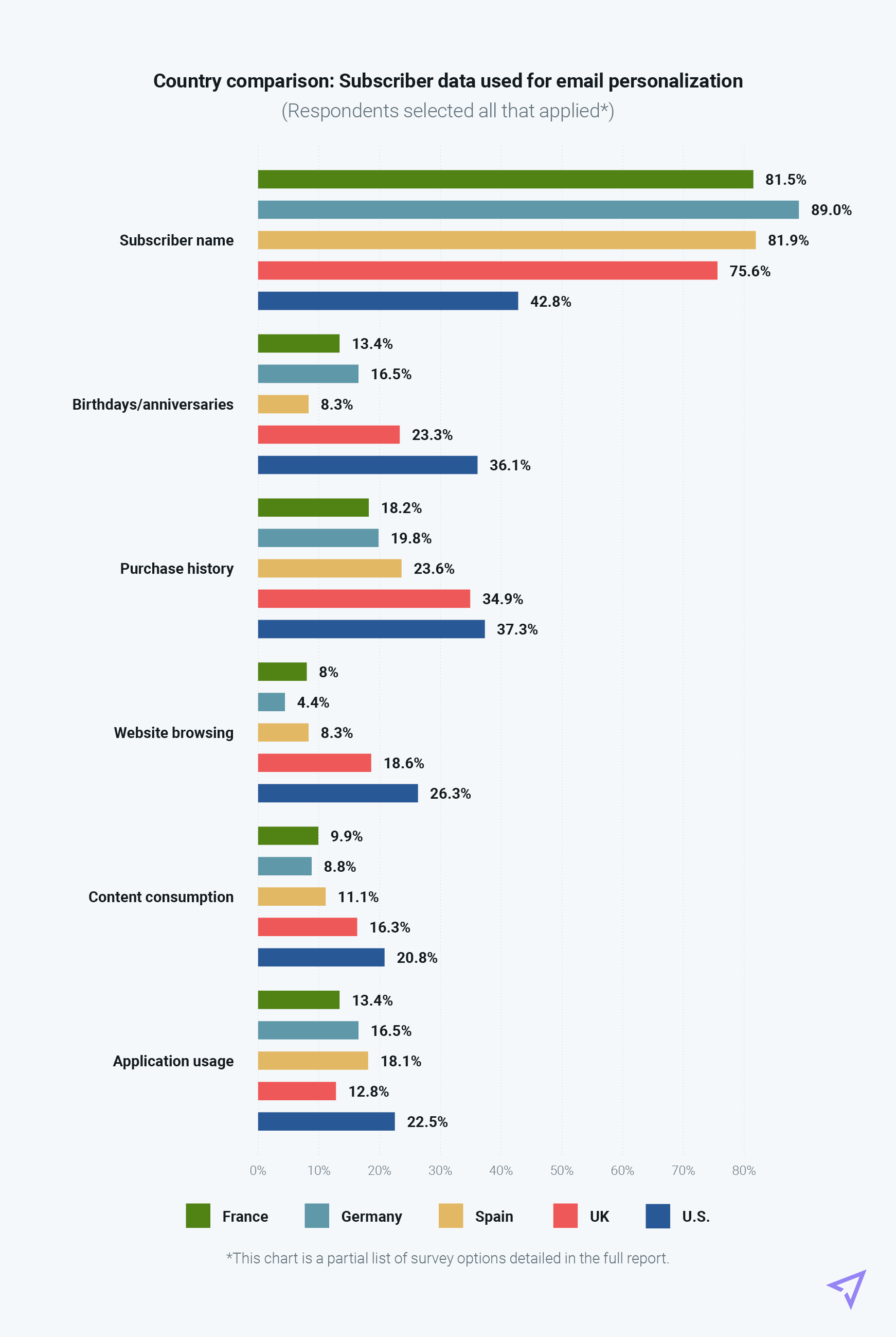
It could be that email marketers in the United States are more aggressive or that they have more advanced technology to support personalization programs. Whatever the case and wherever you’re located, subscriber data must be used wisely and responsibly.
Start personalizing emails with Sinch Mailjet
For some email marketers, personalization may not seem like much of an “advanced tactic” at all. For others, it could be a huge leap in their strategy.
In fact, stats from beyond our survey suggest personalization could have a huge impact on the ROI of email marketing. A study from Google and Econsultancy found that 90% of marketers say personalization significantly contributes to business profitability.
Whether you are dipping your toes into the email personalization pond or want a better way to get the job done, Sinch Mailjet has the perfect solutions. Mailjet makes email personalization easy. Use our platform to design beautiful campaigns and customize them with everything from subscriber names to more advanced personalization techniques that only require some simple markup. We’ve also got a versatile, DIY Form Builder to help you capture subscriber data for better personalized emails.
Find out what email personalization can do to improve your strategy and boost performance.
Start exploring
Get your copy of Inbox Insights 2023
Discover the details of an in-depth industry survey featuring more than 3,200 email senders like you. Find out what you can learn from their success, challenges, and strategies. Then take your email program to the next level. Get instant access. No form filling required.








